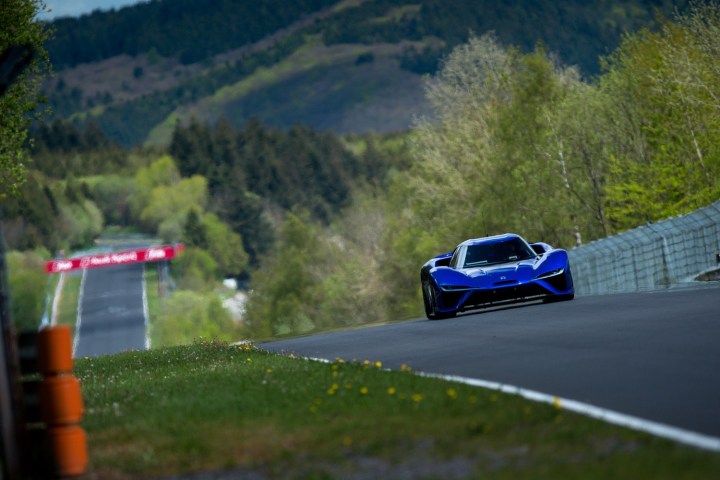
The Nio EP9, an electric supercar built by Chinese startup NextEV, lapped the famous German racetrack in just 6 minutes, 45.90 seconds. That’s a substantial improvement over the 6:52.01 set by the Lamborghini Huracán LP640-4 Performante last fall. But because just 16 copies of the EP9 will be built, some will likely consider the Lambo’s lap time to be more meaningful as a yardstick for production cars.
This is actually the second time the EP9 has visited the Nürburgring. Last fall, it set a lap time of 7:05.12. Nio said the 19.22-second improvement was achieved thanks to better weather conditions on the second attempt.
The EP9 is powered by four electric motors, producing a combined 1,342 horsepower. While Nio won’t quote a 0 to 60 mph time, it claims the EP9 can do 0 to 200 kph (0 to 124 mph) in 7.1 seconds, and reach a top speed of 124 mph. The supercar also features an “interchangeable battery system” that allows charging in 45 minutes, an estimated range of 265 miles, and autonomous-driving capability.
The initial batch of six EP9 production cars was reserved for company investors, but Nio plans to build a second batch of 10 cars for the general public, priced at $1.48 million each. It’s unclear whether any of these cars will actually make it to the U.S., but Nio does plan to have a presence here in the future.
In March, the company announced plans to sell autonomous electric cars in the U.S. by 2020, and unveiled the Eve concept as a preview of what those cars might look like. The Eve drew criticism from Nick Sampson, R&D boss at fellow electric-car startup Faraday Future. Sampson felt the Eve plagiarized the design of Faraday’s own FF91 electric SUV.
Last month, Nio unveiled its first volume production model, the ES8. It’s a seven-seat SUV intended for the Chinese market. While it lacks the Eve and EP9’s autonomous-driving capabilities, the ES8 is a more sensible starting point for a new company trying to break into a tough industry. In has promised a premium electric SUV at a “Toyota price,” and we’ll soon find out if it can deliver.


